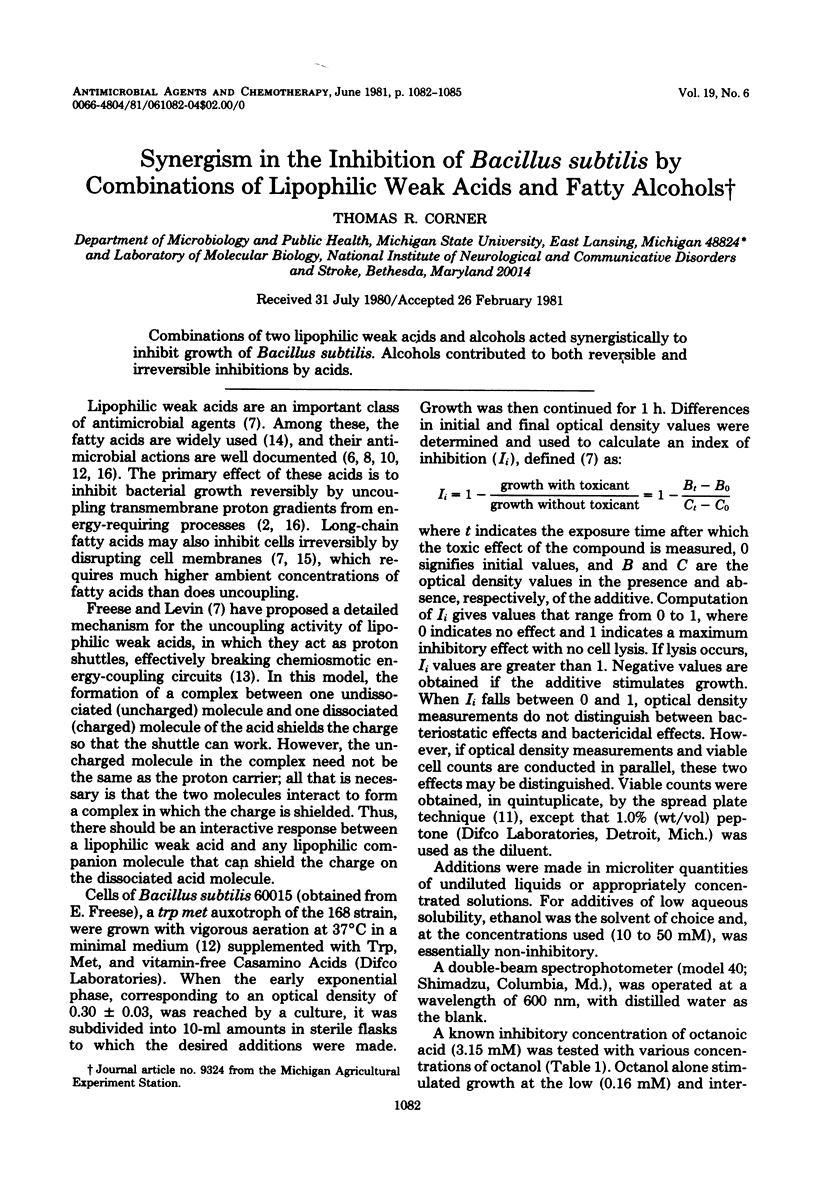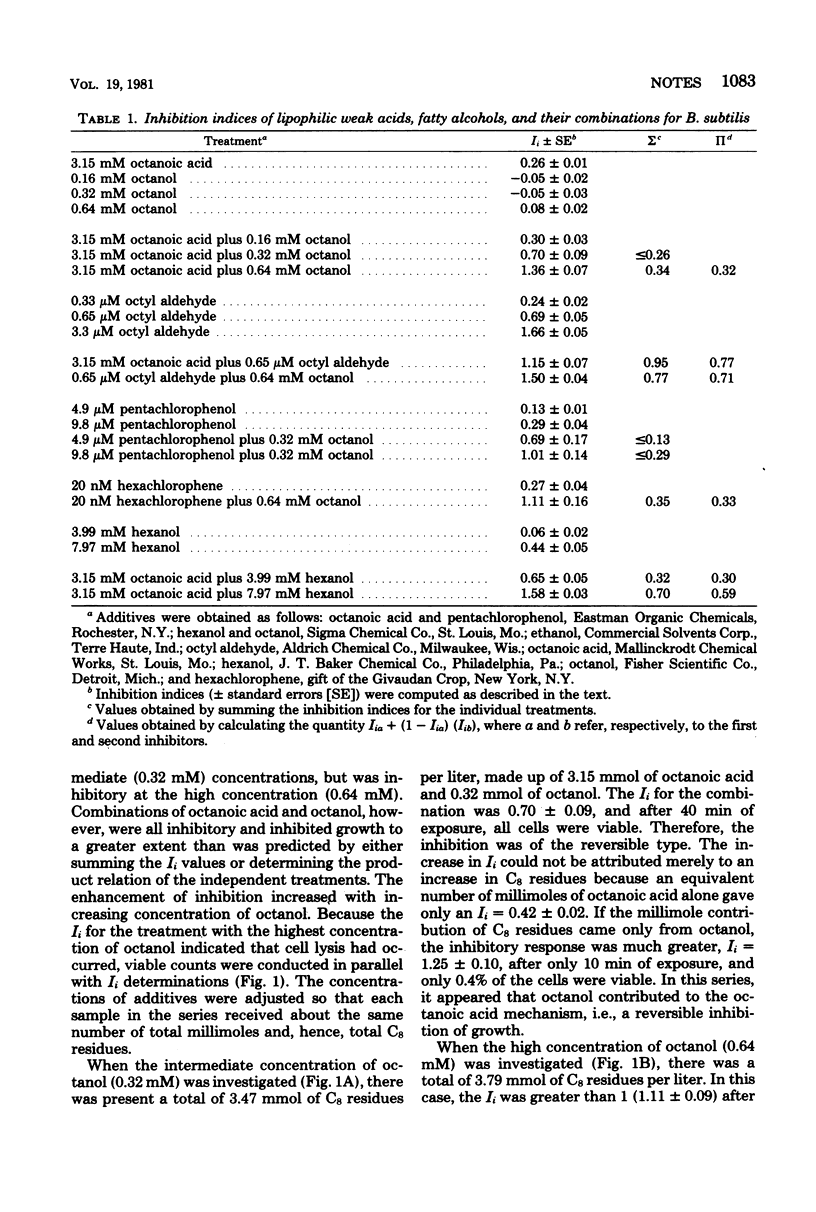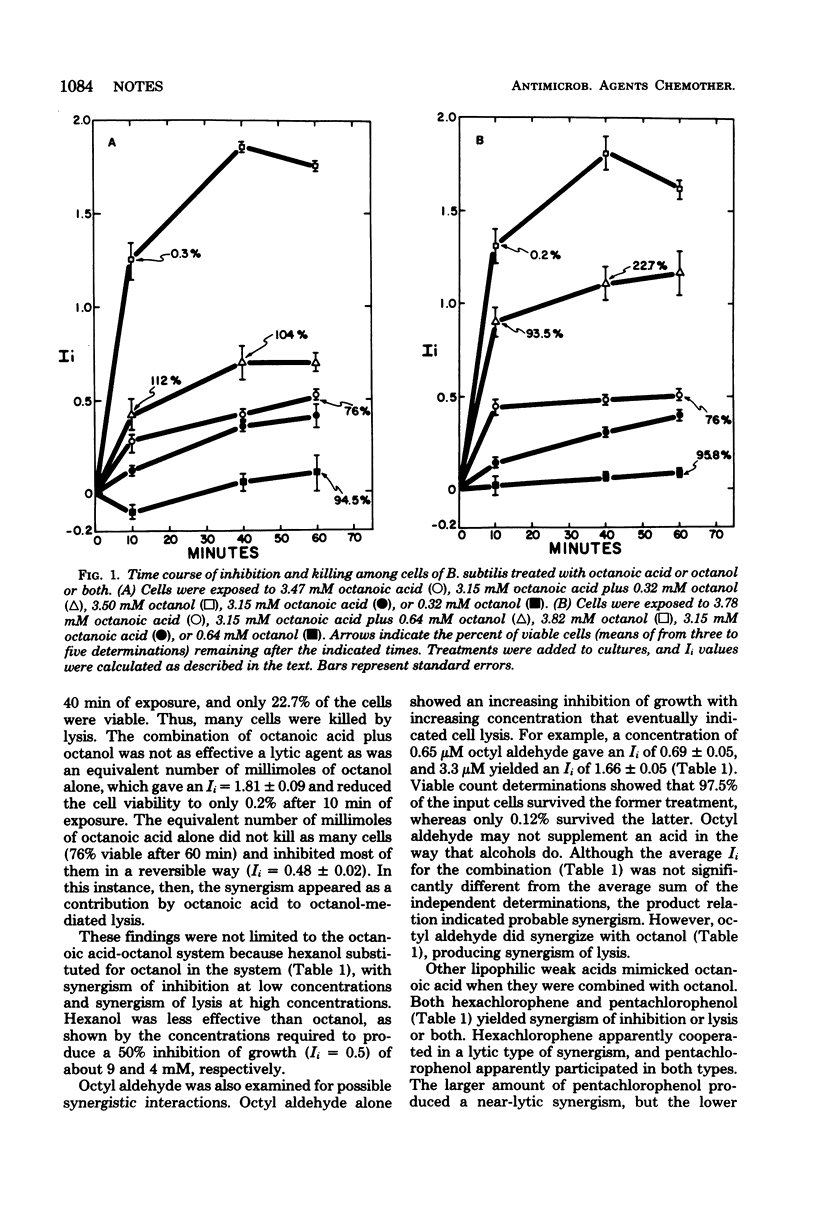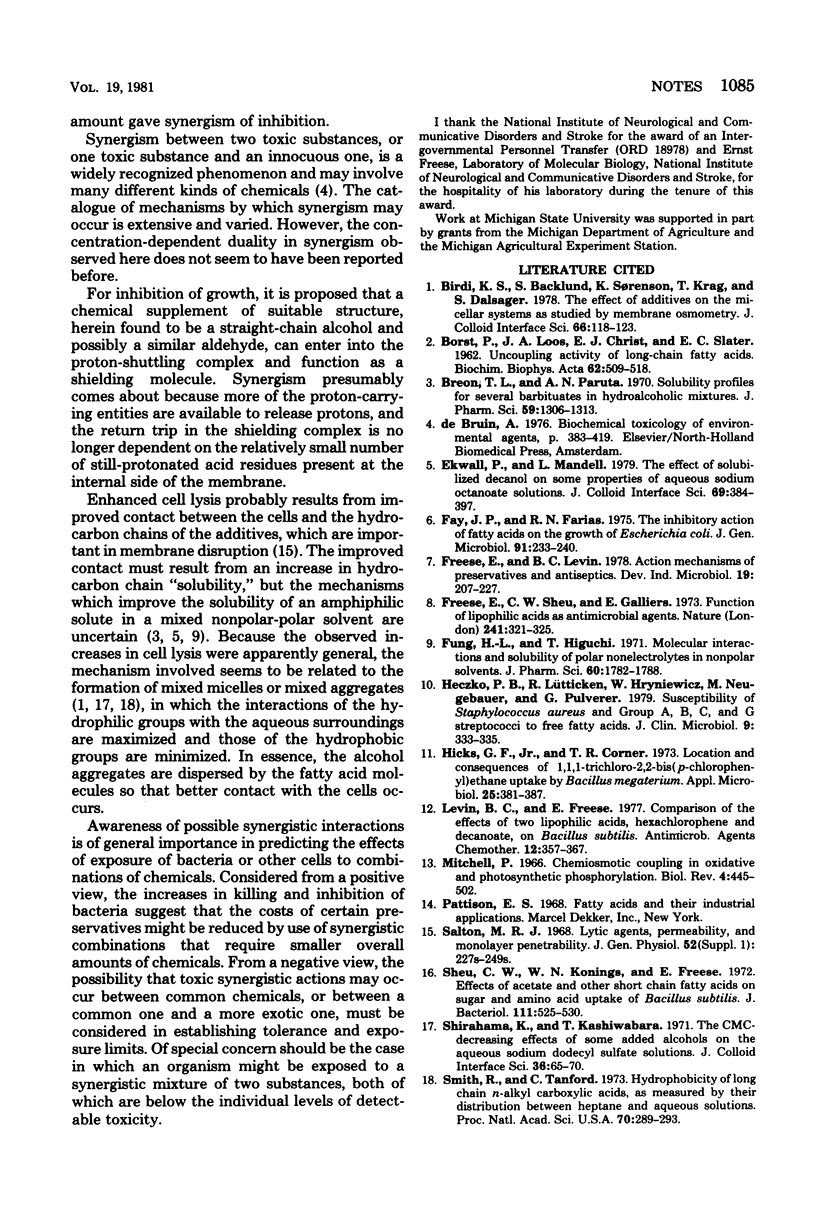Abstract
Combinations of two lipophilic weak acids and alcohols acted synergistically to inhibit growth of Bacillus subtilis. Alcohols contributed to both reversible and irreversible inhibitions by acids.
Full text
PDF



Selected References
These references are in PubMed. This may not be the complete list of references from this article.
- BORST P., LOOS J. A., CHRIST E. J., SLATER E. C. Uncoupling activity of long-chain fatty acids. Biochim Biophys Acta. 1962 Aug 27;62:509–518. doi: 10.1016/0006-3002(62)90232-9. [DOI] [PubMed] [Google Scholar]
- Breon T. L., Paruta A. N. Solubility profiles for several barbiturates in hydroalcoholic mixtures. J Pharm Sci. 1970 Sep;59(9):1306–1313. doi: 10.1002/jps.2600590920. [DOI] [PubMed] [Google Scholar]
- Fay J. P., Farias R. N. The inhibitory action of fatty acids on the growth of Escherichia coli. J Gen Microbiol. 1975 Dec;91(2):233–240. doi: 10.1099/00221287-91-2-233. [DOI] [PubMed] [Google Scholar]
- Freese E., Sheu C. W., Galliers E. Function of lipophilic acids as antimicrobial food additives. Nature. 1973 Feb 2;241(5388):321–325. doi: 10.1038/241321a0. [DOI] [PubMed] [Google Scholar]
- Fung H. L., Higuchi T. Molecular interactions and solubility of polar nonelectrolytes in nonpolar solvents. J Pharm Sci. 1971 Dec;60(12):1782–1788. doi: 10.1002/jps.2600601203. [DOI] [PubMed] [Google Scholar]
- Heczko P. B., Lütticken R., Hryniewicz W., Neugebauer M., Pulverer G. Susceptibility of Staphylococcus aureus and group A, B, C, and G streptococci to free fatty acids. J Clin Microbiol. 1979 Mar;9(3):333–335. doi: 10.1128/jcm.9.3.333-335.1979. [DOI] [PMC free article] [PubMed] [Google Scholar]
- Hicks G. F., Jr, Corner T. R. Location and consequences of 1,1,1-trichloro-2,2-bis(p-chlorophenyl) ethane uptake by Bacillus megaterium. Appl Microbiol. 1973 Mar;25(3):381–387. doi: 10.1128/am.25.3.381-387.1973. [DOI] [PMC free article] [PubMed] [Google Scholar]
- Levin B. C., Freese E. Comparison of the effects of two lipophilic acids, hexachlorophene and decanoate, on Bacillus subtilis. Antimicrob Agents Chemother. 1977 Sep;12(3):357–367. doi: 10.1128/aac.12.3.357. [DOI] [PMC free article] [PubMed] [Google Scholar]
- Mitchell P. Chemiosmotic coupling in oxidative and photosynthetic phosphorylation. Biol Rev Camb Philos Soc. 1966 Aug;41(3):445–502. doi: 10.1111/j.1469-185x.1966.tb01501.x. [DOI] [PubMed] [Google Scholar]
- Sheu C. W., Konings W. N., Freese E. Effects of acetate and other short-chain fatty acids on sugar and amino acid uptake of Bacillus subtilis. J Bacteriol. 1972 Aug;111(2):525–530. doi: 10.1128/jb.111.2.525-530.1972. [DOI] [PMC free article] [PubMed] [Google Scholar]
- Smith R., Tanford C. Hydrophobicity of Long Chain n-Alkyl Carboxylic Acids, as Measured by Their Distribution Between Heptane and Aqueous Solutions. Proc Natl Acad Sci U S A. 1973 Feb;70(2):289–293. doi: 10.1073/pnas.70.2.289. [DOI] [PMC free article] [PubMed] [Google Scholar]


